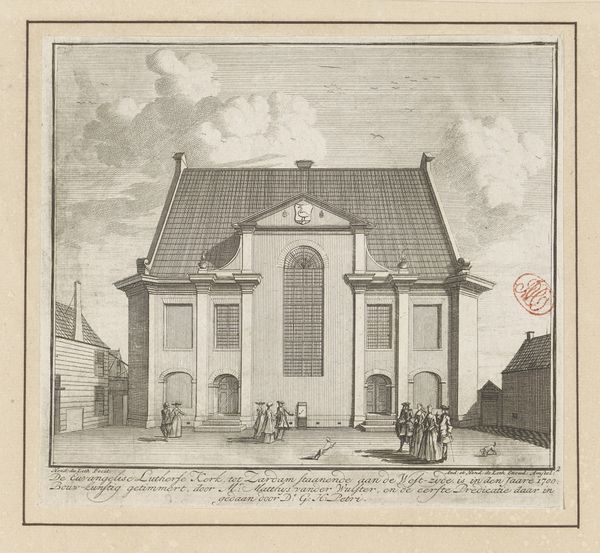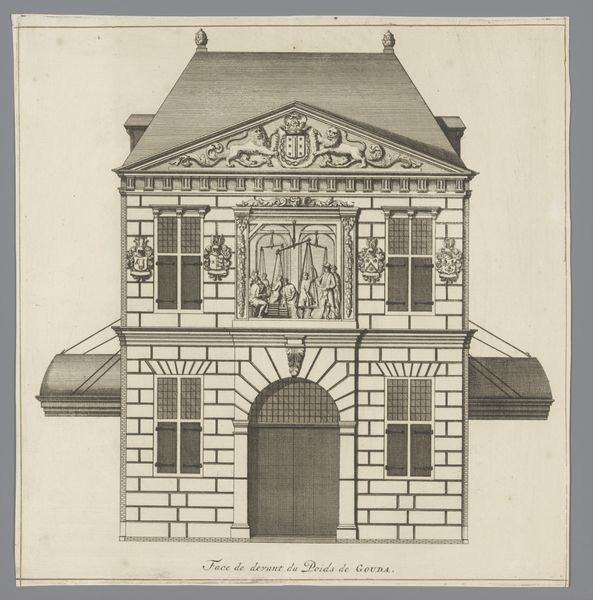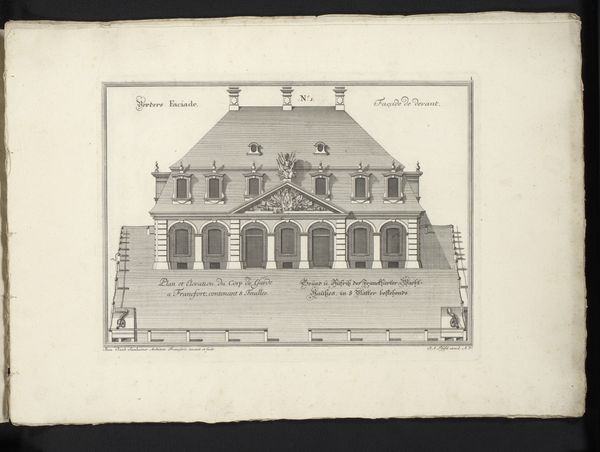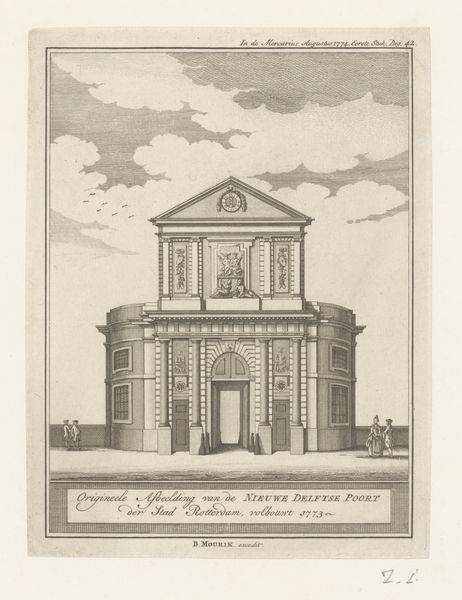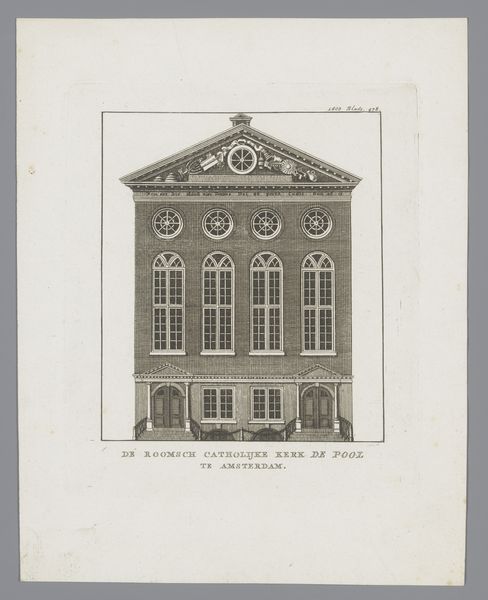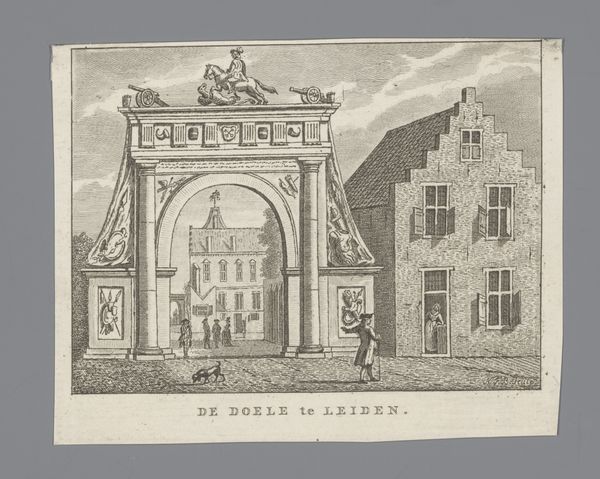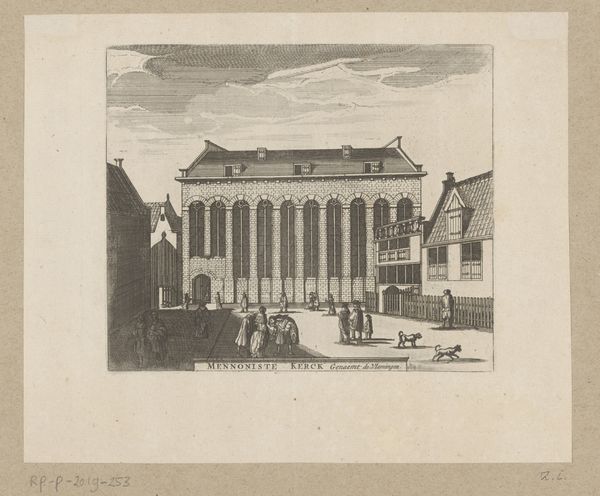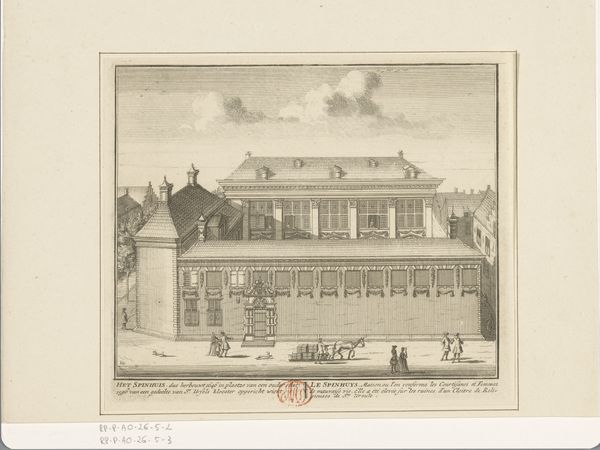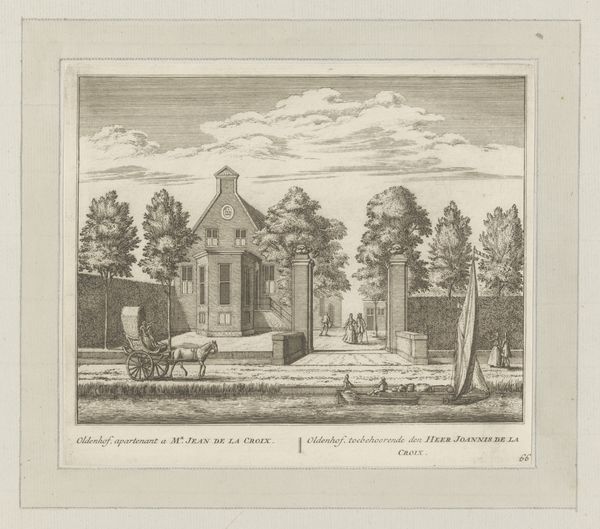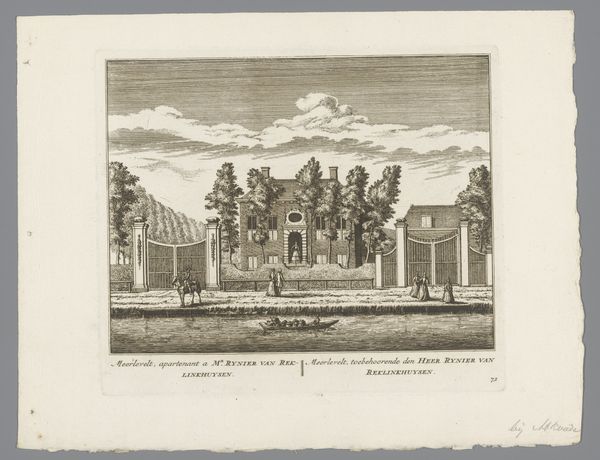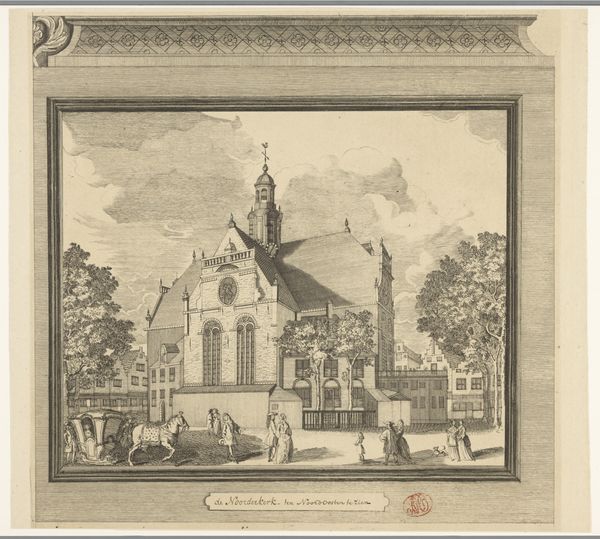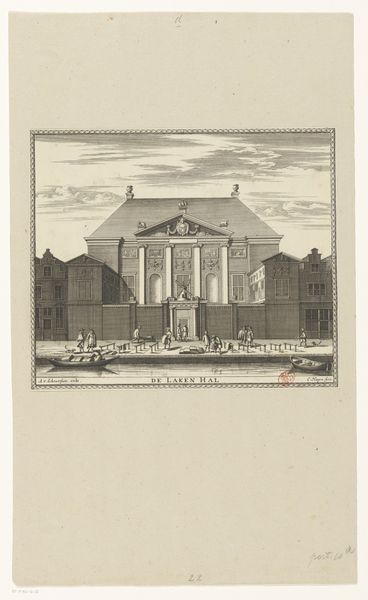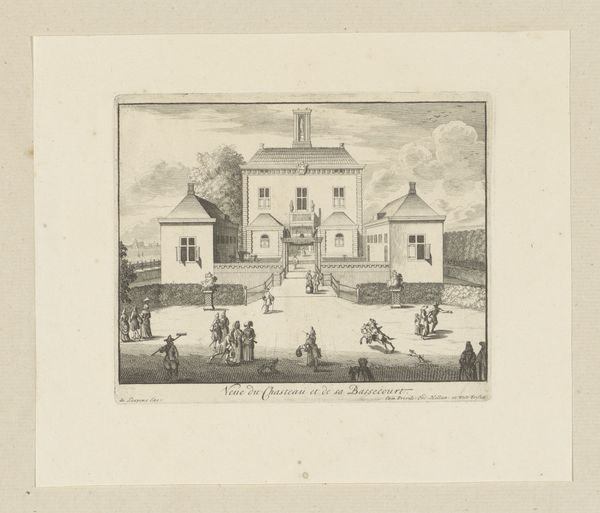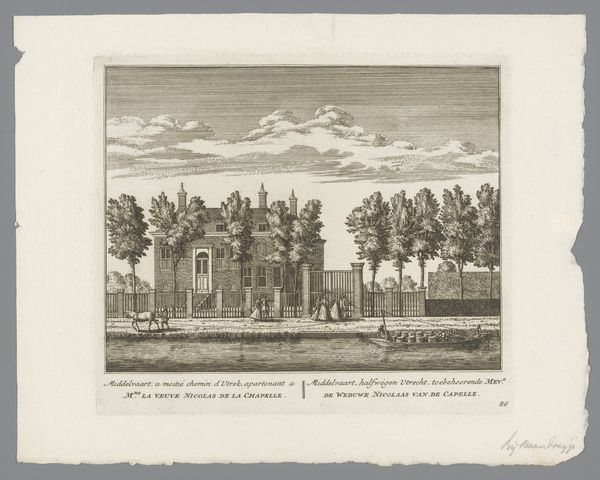
print, engraving, architecture
#
baroque
#
dutch-golden-age
# print
#
cityscape
#
engraving
#
architecture
Dimensions: height 155 mm, width 190 mm
Copyright: Rijks Museum: Open Domain
Curator: We're looking at a print entitled "Gezicht op de Lutherse Kerk te Zaandam," or "View of the Lutheran Church in Zaandam." Pieter van Gunst created this engraving sometime between 1700 and 1721. It's currently held in the Rijksmuseum collection. Editor: It's remarkably formal. The church itself feels rather austere, with a solid geometry and rather muted affect. Is that typical of the era's representation of religious structures? Curator: Very much so. The Dutch Golden Age, though brimming with mercantile activity and newfound wealth, was also a period where Protestant values of simplicity and practicality found expression in architecture. Churches were often designed to be functional spaces, devoid of excessive ornamentation. It speaks volumes about their socio-religious priorities. Editor: Yes, I notice the two figures walking toward the entrance – they're quite small in relation to the building, aren't they? It enhances the sense of the church as an imposing symbol. Also, the lettering below. Are they religious or secular mottos? Curator: Both actually. They reference God's blessing and also magistrates who authorized the structure. Notice the balanced composition. The building's symmetry reflects an ordered, hierarchical society, with the church at its center. We also see its importance to those who ruled. Editor: It makes me think about how such structures reinforced community identity during a transformative period, linking secular governance to spiritual life. The image carries more symbolic weight than its understated visual vocabulary suggests. Curator: Precisely. While the style might appear minimalist compared to, say, Baroque cathedrals in other parts of Europe, its symbolism resonates deeply within its own cultural context, portraying both the spiritual values and the civic structures of the time. Editor: Considering it this way enriches how we perceive it – it becomes much more than just a simple building portrait, doesn't it? Curator: Yes, this piece invites us to consider the layers of meaning embedded within seemingly straightforward architectural depictions, uncovering historical attitudes and societal values through visual symbolism.
Comments
No comments
Be the first to comment and join the conversation on the ultimate creative platform.
